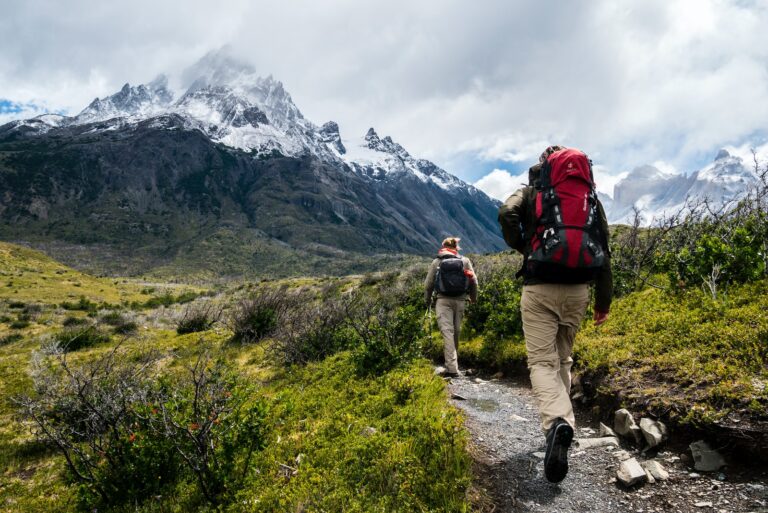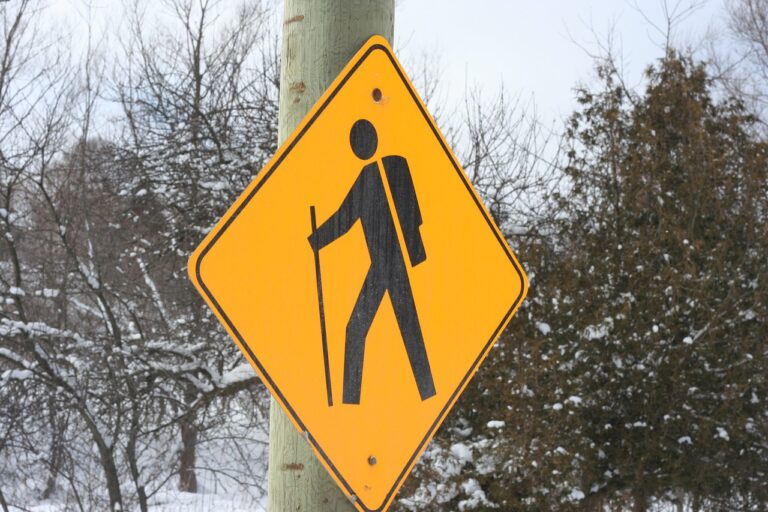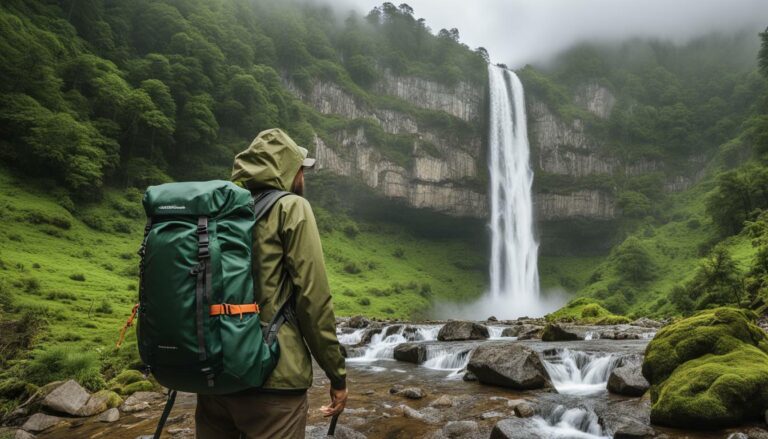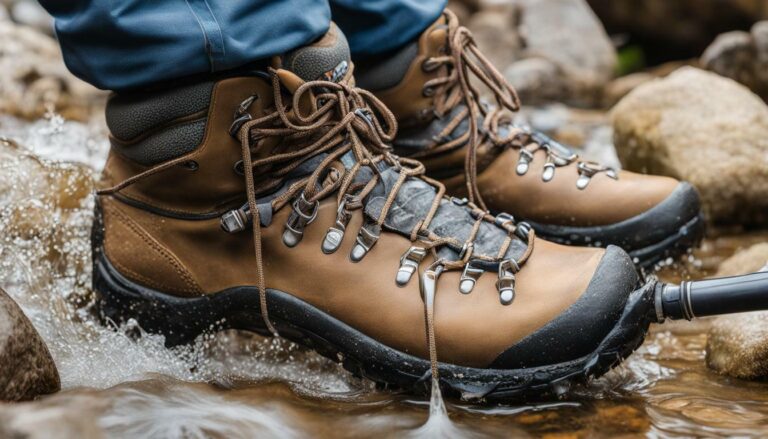Stay Warm: Essential Hiking Gear for Cold Weather Guide
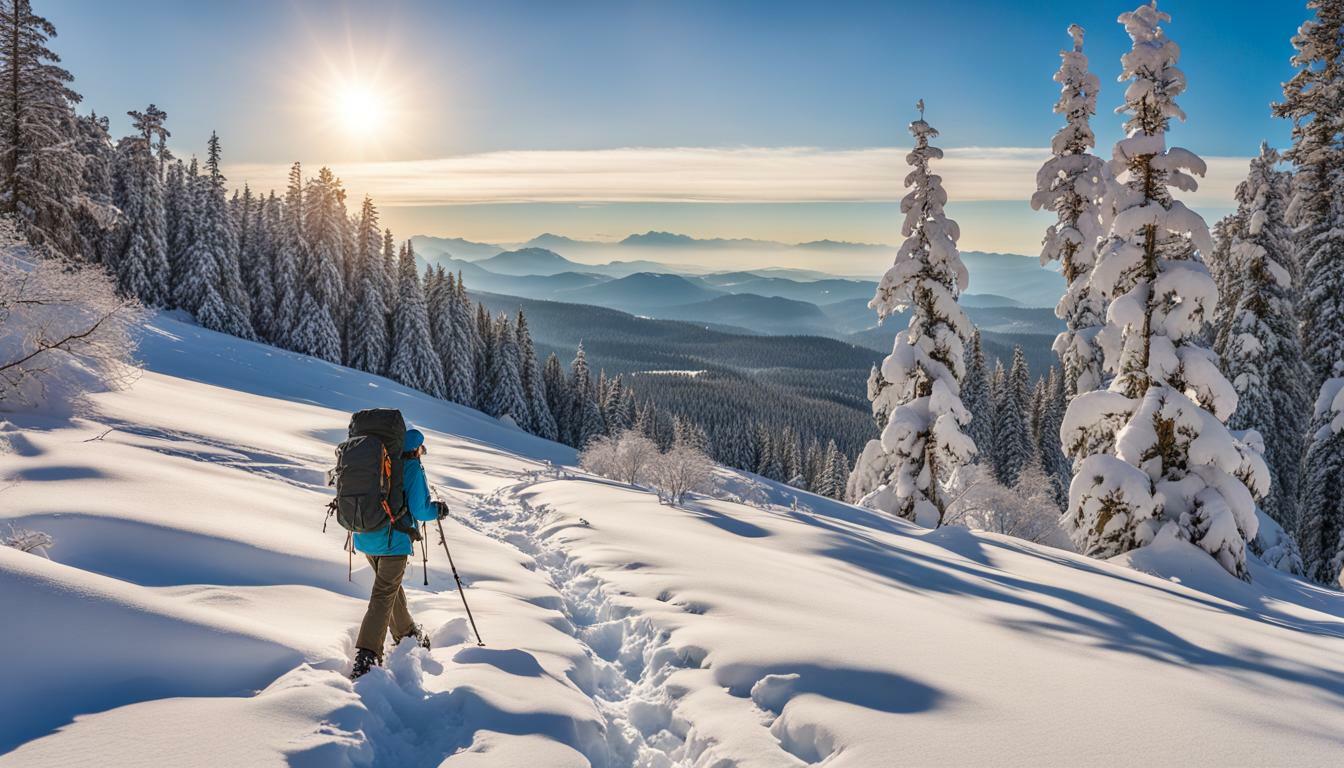
Winter hiking can be a thrilling and rewarding experience, but it’s important to stay warm and safe in cold weather conditions. Essential hiking gear for cold weather can make all the difference in ensuring you have an enjoyable and comfortable winter hike. In this comprehensive guide, we will discuss the necessary winter hiking gear from warm clothing to navigation tools and safety equipment.
Key Takeaways
- Essential hiking gear for cold weather is necessary to stay warm and safe during winter hikes.
- Proper layering, footwear, and accessories are essential for regulating body temperature in cold weather.
- Navigation tools, safety equipment, and backpacks should be carefully selected for winter hiking conditions.
- Planning ahead and practicing trail etiquette is crucial for a successful winter hike.
Prepare for the Cold: Winter Hiking Gear Essentials
As you plan for your next winter hike, it is crucial to have the right gear and clothing to stay safe and comfortable in cold weather conditions. Whether you are a seasoned hiker or a beginner, having the right winter hiking gear is essential.
When it comes to winter hiking gear essentials, prioritizing warmth and protection is key. Here are some of the must-have items:
| Item | Description |
|---|---|
| Insulated Jacket | A high-quality insulated jacket will help keep you warm and maintain body heat in cold conditions. |
| Base Layers | Wearing moisture-wicking base layers is crucial to regulate your body temperature and keep you dry during physical activity in cold weather. |
| Waterproof and Insulated Boots | Invest in waterproof and insulated boots to keep your feet dry and warm during winter hikes. |
| Thick, Moisture-wicking Socks | Wearing thick socks made of moisture-wicking material is crucial for keeping your feet comfortable and dry during winter hikes. |
| Gloves and Hats | Protecting your extremities from frostbite and hypothermia is crucial during cold weather hikes. Invest in quality gloves and hats to keep your hands and head warm. |
| Navigation Tools | Bring a map, compass, and GPS device to navigate through snowy and cold terrain. Be prepared for low visibility weather. |
| First Aid Kit | As with any outdoor activity, it is important to carry a first aid kit in case of any emergencies or injuries. |
When selecting winter hiking gear, it is important to consider the temperature and weather conditions, as well as the duration and intensity of the hike. Dressing in layers and investing in high-quality gear will ensure that you stay comfortable, warm, and safe during your winter hikes.
Layer Up: Winter Hiking Clothing
When it comes to winter hiking, having the right clothing is essential to staying warm and comfortable. The following is a list of clothing items that are necessary for any cold weather hiking gear list, along with some recommendations for the best gear for winter hiking.
Base Layers
A good base layer is important for keeping moisture away from your skin and regulating body temperature. Look for materials like wool or synthetic blends that are moisture-wicking and quick-drying. Consider getting a base layer with a half-zip for added ventilation.
| Recommended Base Layer | Features |
|---|---|
| Smartwool Merino 250 Base Layer Crew | 100% Merino wool, moisture-wicking, odor-resistant, UPF 50+ sun protection |
Insulating Layers
Insulating layers are designed to keep you warm by trapping heat close to your body. Look for materials like down or synthetic insulation that are lightweight and compressible. Consider getting an insulated jacket with a hood for added warmth.
| Recommended Insulating Layer | Features |
|---|---|
| Patagonia Nano Puff Jacket | 100% recycled polyester shell and lining, PrimaLoft Gold Eco insulation, zippered handwarmer pockets |
Outer Shells
An outer shell is essential for protecting you from wind, rain, and snow. Look for materials that are waterproof and breathable, like Gore-Tex or eVent. Consider getting an outer shell with adjustable cuffs and a hood for added protection.
| Recommended Outer Shell | Features |
|---|---|
| The North Face Apex Flex GTX 2.0 Jacket | Gore-Tex 3L waterproof and breathable membrane, adjustable hood and cuffs, zippered hand pockets |
Remember to layer up and adjust your clothing as needed to maintain a comfortable body temperature. Don’t forget to bring extra clothing in case of emergencies or unexpected weather changes.
Protect Your Feet: Winter Hiking Footwear
In cold weather conditions, your hiking footwear is crucial for keeping your feet warm and dry. Proper winter hiking boots should be waterproof, insulated, and provide good traction in snow and ice. Look for boots with sturdy soles and thick, moisture-wicking socks to keep your feet warm and dry.
One of the best winter hiking gear that you can invest in is a pair of gaiters. Gaiters cover the top of your boots and prevent snow from entering into your boots. They will also keep your ankles and lower legs dry in wet conditions.
During winter hikes, be aware of any signs of frostbite or hypothermia in your feet, such as numbness, tingling, or loss of feeling. Take the necessary precautions to protect and care for your feet during cold weather conditions, including changing into warm, dry socks if necessary and drying your feet thoroughly at the end of the day.
Keep Your Hands Warm: Winter Hiking Accessories
Winter hiking can be brutal on the extremities, making it crucial to cover up your hands, head, and neck properly. In addition to good clothing and footwear, investing in quality accessories is essential to stay comfortable and safe in cold weather.
Gloves
Invest in a pair of high-quality gloves that are both windproof and waterproof. Look for gloves with a breathable membrane to prevent sweaty hands and a secure fit to keep the heat. For extra warmth, consider layering gloves with an insulating liner or mittens over the top.
Hats
A hat is a must-have accessory to keep your head and ears warm on winter hikes. Choose a beanie or hat made from wool or synthetic fibers that are breathable and moisture-wicking. Consider a hat with ear flaps and a chin strap for additional protection in harsh conditions.
Neck Gaiters
Protect your neck and face from wind and cold with a neck gaiter. Choose a lightweight, stretchy, and breathable gaiter for maximum comfort. It can also be used as a headband, balaclava, or hat in case of emergency.
Adding these accessories to your winter outdoor gear will keep your hands, head, and neck warm in any condition. Make sure to invest in high-quality gear to ensure it lasts for many winters to come.
Stay Hydrated: Winter Hiking Water Bottles and Filters
Staying hydrated is key when hiking in cold weather. It’s easy to forget to drink water when you aren’t sweating, but it’s just as important in cold weather as it is in the heat.
When choosing a water bottle for winter hiking, look for one that is insulated to keep your water from freezing. Some bottles come with a cover that can be removed and used as a cup for hot drinks, which can be a nice treat on a cold day.
If you plan on drinking from natural water sources on your hike, make sure to bring a water filter. In cold weather, water sources can freeze over or become contaminated, and a filter will ensure that any water you drink is safe and clean.
Some popular water bottles for winter hiking include:
| Bottle | Features |
|---|---|
| Hydro Flask Insulated Water Bottle | Keeps water cold for up to 24 hours and hot for up to 12 hours. Available in various sizes and colors. |
| Nalgene Wide Mouth Water Bottle | BPA-free and made in the USA. Comes in a variety of colors and sizes up to 48 oz. |
| Klean Kanteen Insulated Water Bottle | Available in various sizes and colors, with a leak-proof cap and double-wall vacuum insulation. |
When it comes to water filters, there are many options to choose from. Some popular filters for winter hiking include the Sawyer Squeeze Water Filter and the Katadyn Hiker Pro Water Filter. Both filters are lightweight and easy to use, and can filter out bacteria and protozoa from natural water sources.
Remember to drink plenty of water on your winter hikes, and bring a water bottle and filter that are suitable for cold weather conditions.
When hiking in cold weather conditions, it is important to have the right tools to navigate safely and efficiently. Cold weather outdoor gear should include reliable navigation tools to ensure hikers don’t get lost on the trail.
Hiking gear for low temperatures should include maps, compasses, and GPS devices. It’s crucial to learn how to read a map and compass, especially when visibility is low due to snow or fog.
In addition, GPS devices can be useful for tracking progress and finding your way back to the trailhead. However, it’s important to remember that electronic devices can sometimes fail in cold weather conditions, so it’s always a good idea to have a backup plan.
When planning a winter hike, it’s important to check the weather forecast and prepare for potential weather changes. Some navigation tools can also help hikers anticipate weather changes, such as barometers that can indicate a storm approaching.
By including the right winter hiking gear like navigation tools, hikers can feel confident and safe on the trail, even in challenging conditions.
Stay Safe: Winter Hiking Safety Equipment
When venturing out for a winter hike, it is important to be prepared for emergencies. Carrying the proper safety equipment can make all the difference in case of unforeseen circumstances. Here are some essential items to include in your winter hiking gear list:
| Equipment | Why It’s Essential |
|---|---|
| Headlamp | In case you’re caught out after dark, a headlamp is vital to safely navigate the trails. |
| Whistle | If you get lost or need help, a whistle is a loud and effective way to signal for assistance. |
| First Aid Kit | Minor injuries can quickly become serious in cold weather conditions. A first aid kit provides necessary aid while waiting for professional help. |
Be sure to also carry a fully charged cell phone for emergencies. If heading out to remote areas, consider investing in a personal locator beacon (PLB) or satellite messenger device.
By carrying essential safety equipment, you can have peace of mind while enjoying your winter hike.
Pack Smart: Winter Hiking Backpacks
When it comes to choosing a backpack for winter hiking, it’s important to consider the specific features that will keep you comfortable and prepared on the trail. Look for a backpack that is durable and weather-resistant, with a capacity that can accommodate all of your essential gear.
One important feature to consider is a backpack’s insulation. Some winter hiking backpacks are designed with insulated compartments that can keep food and water from freezing in cold temperatures. Many also have external attachment points for carrying snowshoes, ice axes, and other winter gear.
Another important feature to look for is a backpack’s water resistance. Winter hikes often require traversing through snow and other wet conditions, so it’s important to choose a backpack that can keep your gear dry. Consider a backpack with a waterproof coating or a built-in rain cover.
Finally, make sure that the backpack you choose has comfortable straps and proper weight distribution. A well-designed backpack will help distribute the weight of your gear and prevent discomfort or injury on long hikes.
Plan Ahead: Winter Hiking Tips and Safety Precautions
Winter hiking can be a wonderful experience, but it’s important to be prepared for the cold weather and potential hazards. Here are some essential winter hiking tips and safety precautions to keep in mind:
- Check the weather forecast and trail conditions before heading out. Avoid hiking in severe weather conditions.
- Inform someone of your hiking plans, including your route and expected return time. In case of emergency, it’s essential to have someone know your whereabouts.
- Dress appropriately with warm layers, proper footwear, and accessories to protect extremities from frostbite. Carry extra clothing in case of unexpected weather changes.
- Bring enough food, water, and snacks to stay hydrated and energized during your hike.
- Be familiar with the trail map, and carry navigation tools such as a compass, GPS device, or map to stay on track.
- Practice proper trail etiquette, such as staying on the designated trails, avoiding littering, and respecting wildlife habitats.
- Carry essential safety equipment, such as a headlamp, whistle, and first aid kit in case of injury or emergency.
- If hiking alone, avoid taking unnecessary risks, stay informed about your surroundings, and be prepared to change your plans in case of unexpected situations.
By following these winter hiking tips and safety precautions, you can ensure a safe and enjoyable experience on the trails. Don’t forget to bring along the essential winter hiking gear to stay warm and comfortable during your hike. Stay safe and have fun exploring the winter wonderland!
Conclusion
Winter hiking can be an incredible experience, but it’s crucial to have the right gear to stay warm and safe. From layering up with moisture-wicking clothing to investing in a good pair of waterproof boots, the essential hiking gear for cold weather can make all the difference.
Remember to pack smart with a durable and water-resistant backpack and stay hydrated with a suitable water bottle and filter. Navigation tools, safety equipment, and proper planning are also essential for a successful winter hike.
By following these tips and precautions, you can enjoy the beauty of winter hiking while minimizing the risks. Don’t forget to inform others of your plans and practice proper trail etiquette.
Stay warm and happy hiking!
Thank you for reading our guide on Essential Hiking Gear for Cold Weather. We hope our comprehensive list of winter hiking essentials has been helpful in preparing you for your next cold weather adventure.
FAQ
Q: What is the purpose of this article?
A: The purpose of this article is to provide a comprehensive guide on essential hiking gear for cold weather and emphasize the importance of staying warm and safe during winter hikes.
Q: What gear is essential for preparing for winter hikes?
A: Essential gear for winter hikes includes warm clothing, footwear, and accessories. Layering to regulate body temperature is important, so having base layers, insulating layers, and outer shells is crucial.
Q: What clothing items are necessary for winter hiking?
A: For winter hiking, it is important to have base layers, insulating layers, and outer shells. Moisture-wicking and breathable materials are recommended for optimal comfort.
Q: What kind of footwear is recommended for winter hiking?
A: Proper winter hiking footwear includes insulated and waterproof boots. It is also important to wear thick, moisture-wicking socks and take care of your feet in cold conditions.
Q: What accessories should I have for winter hiking?
A: Essential accessories for winter hiking include gloves, hats, and neck gaiters. Protecting extremities from frostbite and hypothermia is crucial.
Q: How do I stay hydrated during winter hikes?
A: Staying hydrated is important during winter hikes. It is recommended to use water bottles and filters suitable for cold weather conditions.
A: Essential navigation tools for winter hiking include maps, compasses, and GPS devices. It is important to be prepared for potential weather changes and low visibility.
Q: What safety equipment should I have for winter hiking?
A: Necessary safety equipment for winter hiking includes headlamps, whistles, and first aid kits. Being prepared for emergencies is crucial.
Q: What features should I look for in a winter hiking backpack?
A: When choosing a winter hiking backpack, consider features such as durability, water resistance, and capacity. There are backpacks specifically designed for cold weather conditions.
Q: What tips and safety precautions should I follow for winter hiking?
A: Helpful tips and safety precautions for winter hiking include checking weather conditions, informing others of your plans, and practicing proper trail etiquette. Being prepared and knowledgeable about the trail is key.

